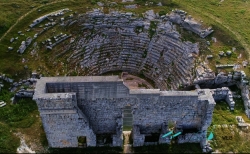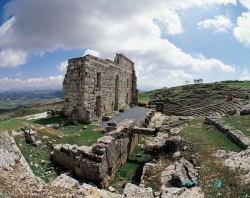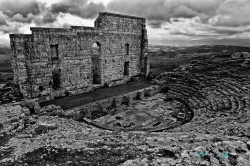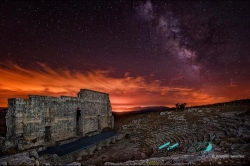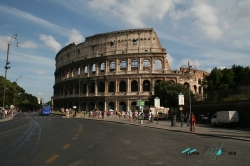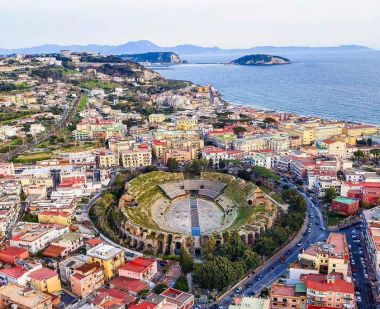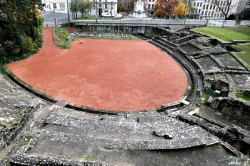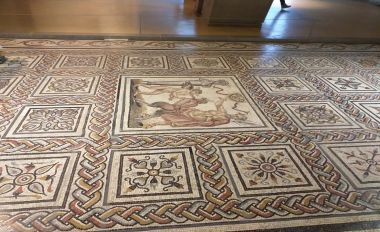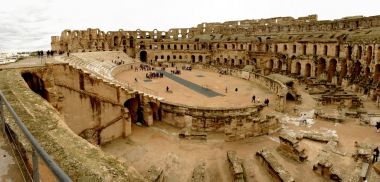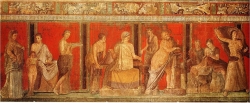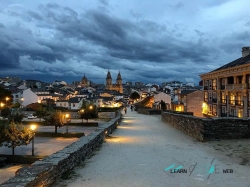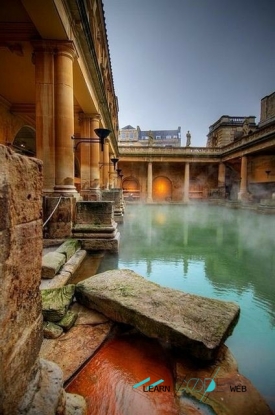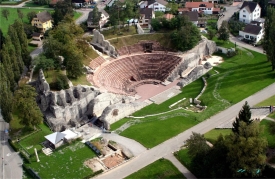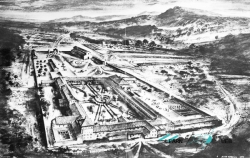ABOUT Acinipo
Acinipo was a city about 20 kilometers from Ronda, in the Spanish province of Málaga, believed to have been founded by retired soldiers from the Roman legions more than 2,000 years ago. The remaining ruins include a Roman theater still in use today. It is sometimes referred to as Ronda la Vieja (Old Ronda) despite the fact that Acinipo and Arunda (the original settlement of Ronda) co-existed for centuries.
Some historians assert that Acinipo was created after the battle of Munda (45 BC), fought between the armies of Julius Caesar and the army of Pompey's two sons, Gnaeus and Sextus. To Caesar, Munda was supposed to be a mop-up action after Pompey's main forces were defeated in Greece. But Munda was no mop-up exercise. Tens of thousands of Romans were killed on both sides; there was no decisive victory for Caesar's armies; and one of Pompey's sons, Sextus, fled to fight another day as a famous rebel pirate against Caesar's successor, Augustus.
Some Spanish historians state that Munda is the Roman name for Ronda, where the battle of Munda may have been fought. According to Pliny, the battle of Munda was fought in Osuna, about 50 km north of Ronda in the province of Seville. But there is general agreement that Acinipo was created for retired veterans of Caesar's legions, while Arunda (Ronda) would be a separate Roman outpost, perhaps created before the Munda conflict for the veterans of Pompey's legions.
Ptolemy calls it a town of the Celtici in Hispania Baetica set on a lofty mountain.
The city is built on a steep slope that forced the construction of all the buildings in the city in a staggered manner.
Theater: The Acinipo theater is the best preserved element of the site; This construction takes advantage of the slope itself for the bleachers, excavated directly on the bedrock. The theater scene was built with the materials resulting from the construction of the stands and is still standing in almost all its elevation, although the most representative architectural elements disappeared centuries ago. At the time it had two lateral vomitories for public access and a perimeter wall that is not preserved.
Thermal baths: The thermal baths, built in the 1st century BC. They are located in the lower part of the city, they have been partially excavated in recent years. It is possible to observe caldarium, tepidarium and other rooms as well as various water pipes and architectural elements such as columns.
Wall: It had a wall around its perimeter of which it is still possible to observe remains on the surface, although its height is unknown; of most of the circular plan towers that it must have had, a small part of the elevation is still observable on the surface. The walled city of Acinipo had the privilege of minting coins, a fact attested by the numerous numismatic finds.
Some historians assert that Acinipo was created after the battle of Munda (45 BC), fought between the armies of Julius Caesar and the army of Pompey's two sons, Gnaeus and Sextus. To Caesar, Munda was supposed to be a mop-up action after Pompey's main forces were defeated in Greece. But Munda was no mop-up exercise. Tens of thousands of Romans were killed on both sides; there was no decisive victory for Caesar's armies; and one of Pompey's sons, Sextus, fled to fight another day as a famous rebel pirate against Caesar's successor, Augustus.
Some Spanish historians state that Munda is the Roman name for Ronda, where the battle of Munda may have been fought. According to Pliny, the battle of Munda was fought in Osuna, about 50 km north of Ronda in the province of Seville. But there is general agreement that Acinipo was created for retired veterans of Caesar's legions, while Arunda (Ronda) would be a separate Roman outpost, perhaps created before the Munda conflict for the veterans of Pompey's legions.
Ptolemy calls it a town of the Celtici in Hispania Baetica set on a lofty mountain.
The city is built on a steep slope that forced the construction of all the buildings in the city in a staggered manner.
Theater: The Acinipo theater is the best preserved element of the site; This construction takes advantage of the slope itself for the bleachers, excavated directly on the bedrock. The theater scene was built with the materials resulting from the construction of the stands and is still standing in almost all its elevation, although the most representative architectural elements disappeared centuries ago. At the time it had two lateral vomitories for public access and a perimeter wall that is not preserved.
Thermal baths: The thermal baths, built in the 1st century BC. They are located in the lower part of the city, they have been partially excavated in recent years. It is possible to observe caldarium, tepidarium and other rooms as well as various water pipes and architectural elements such as columns.
Wall: It had a wall around its perimeter of which it is still possible to observe remains on the surface, although its height is unknown; of most of the circular plan towers that it must have had, a small part of the elevation is still observable on the surface. The walled city of Acinipo had the privilege of minting coins, a fact attested by the numerous numismatic finds.



